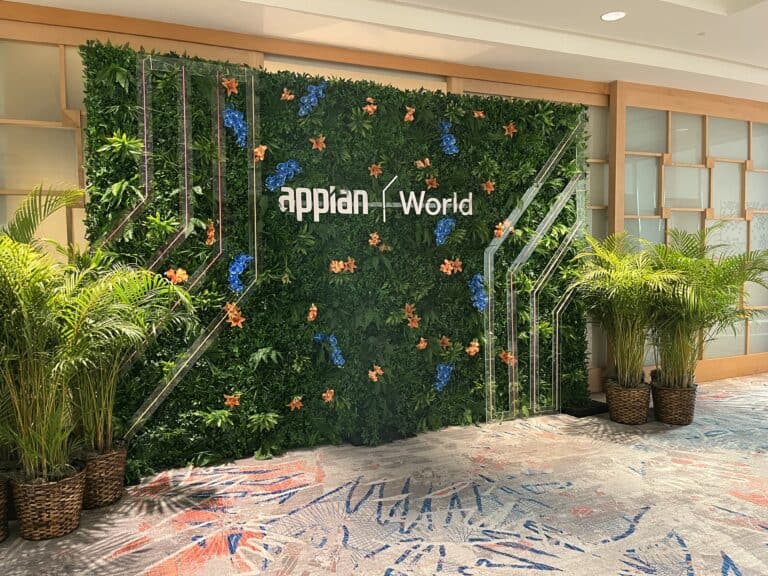Appian’s annual conference focuses on Environmental, Social and Compliance (ESG). The programme features a hackathon in which six participants compete by developing a low-code ESG app.
Appian World takes place annually. Appian uses the conference to present the latest news on its low-code platform. This year’s edition focuses on sustainability and social responsibility, also known as ESG.
Governments are increasingly urging organizations to become more sustainable. ESG isn’t a choice, but a must. At this year’s Appian World, the organization demonstrates how its low-code platform can help achieve sustainability goals.
Low-code for ESG apps
First, Appian organizes a hackathon for developers. The assignment of the hackathon varies every year. This time, six participants are tasked with developing an ESG solution in one hour. During the previous edition, consultant Megan Markert walked away with the prize of 10,000 dollars. In less than 40 minutes, she developed an app for tracking airline fleet status and maintenance.
Secondly, Appian encourages all visitors to use the ‘Go Green at Appian World’ app. The app asks several questions about the user’s journey and participation in the event. Users are given insight into the carbon footprint of their visit and ways in which their footprint can be reduced. Awareness isn’t the only goal. Appian developed the app with Appian Portals, a dev tool for external interfaces. The app demonstrates how Appian lends itself to the development of ESG apps.
“It has never been more urgent for organizations to prioritize sustainability”, shared Michael Heffner, Vice President Solutions and Industry Go To Market at Appian. “Customers, investors, and financial auditors are increasingly making decisions based on a company’s commitment, transparency, and auditability regarding environmental and social impact. Low-code provides the organizations with the requirements to understand their current position, automate for improvement, and measure the results.”
Tip: Low-code: what is it and which type should you consider?
